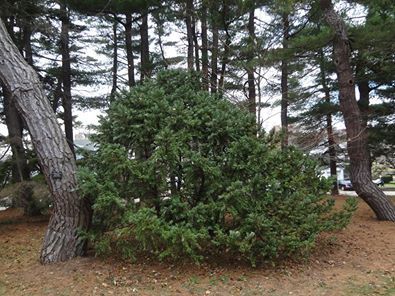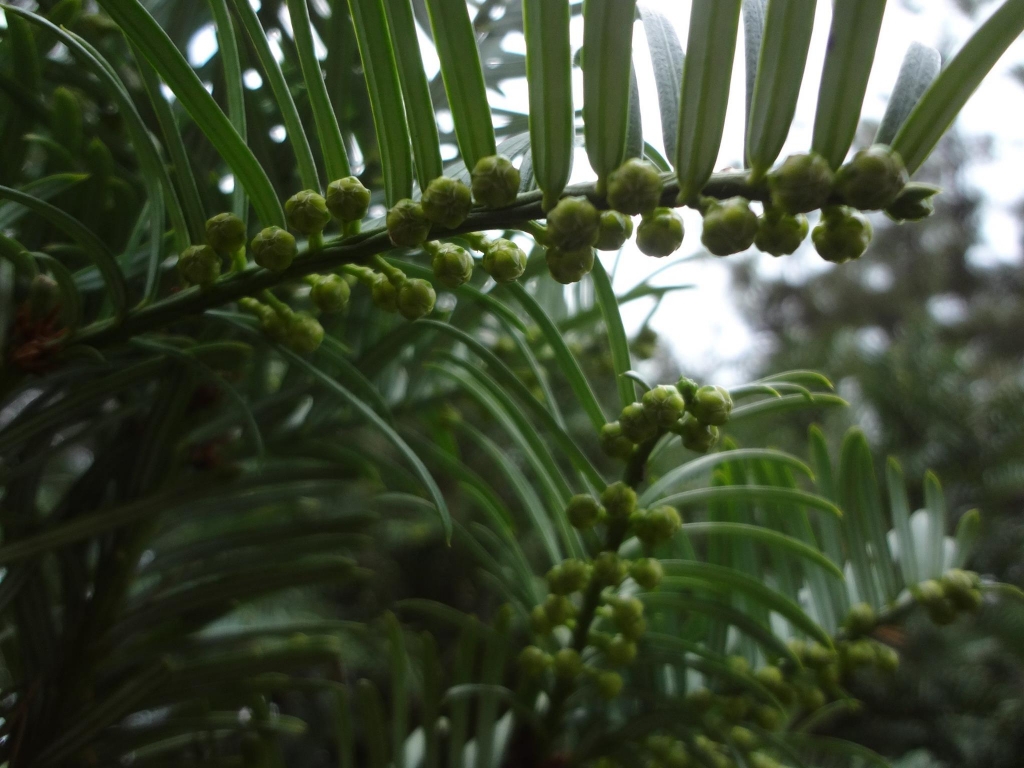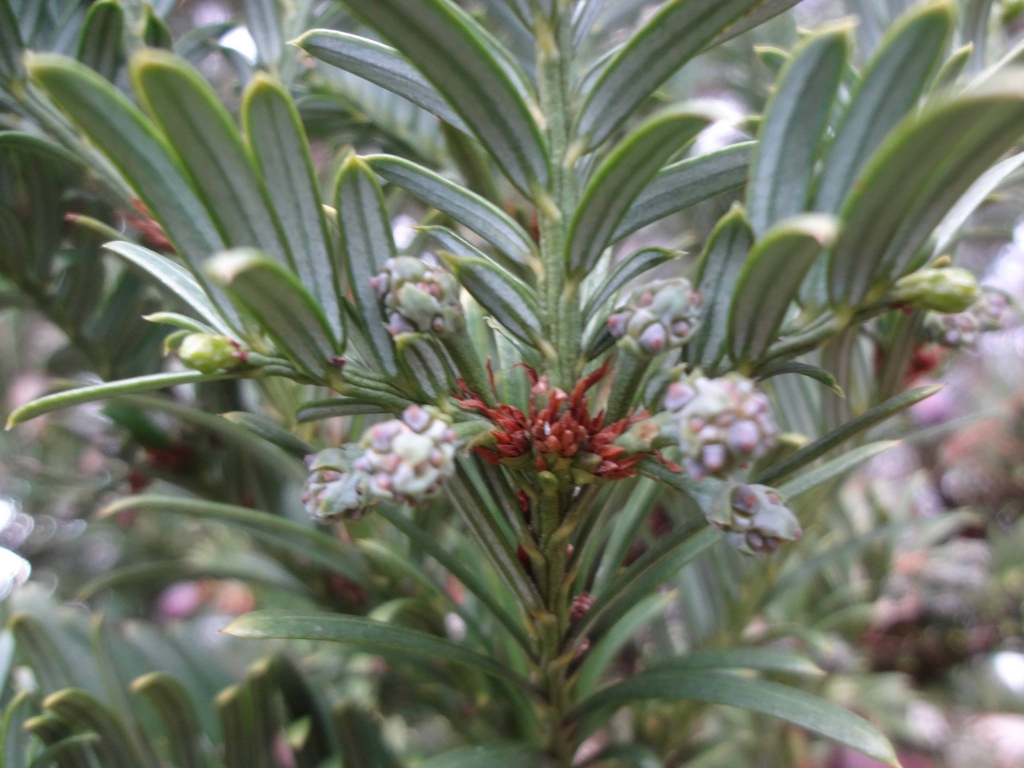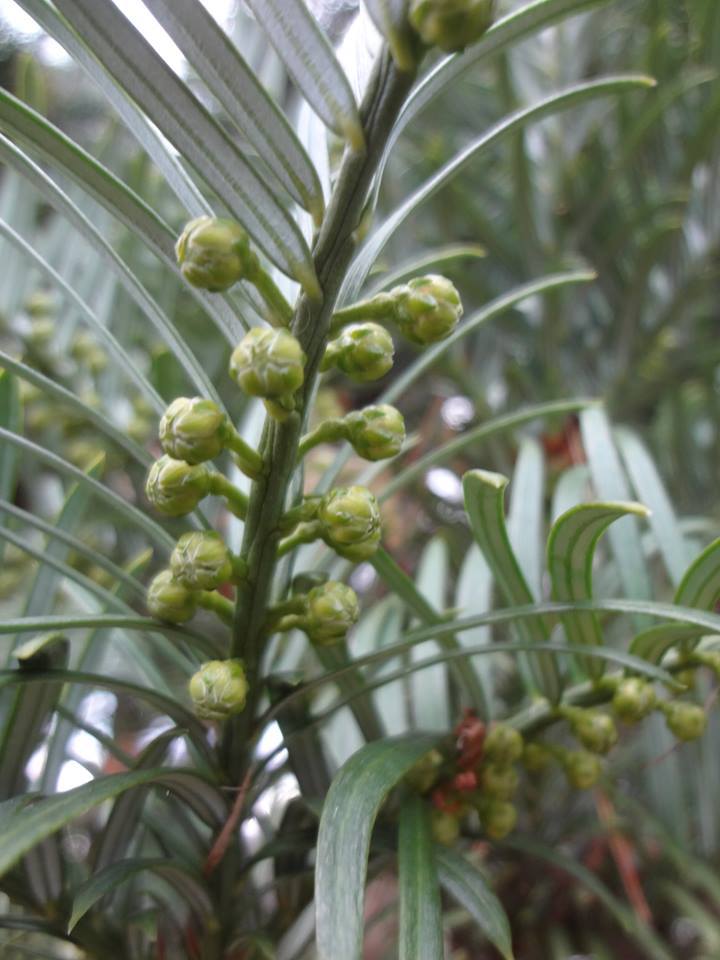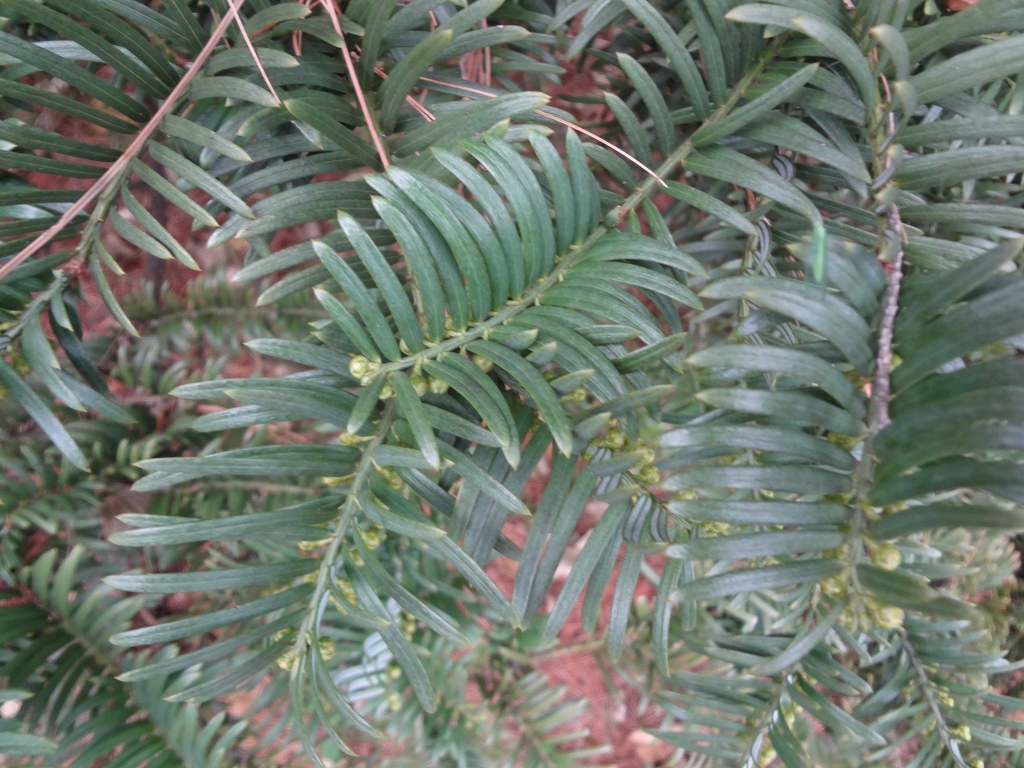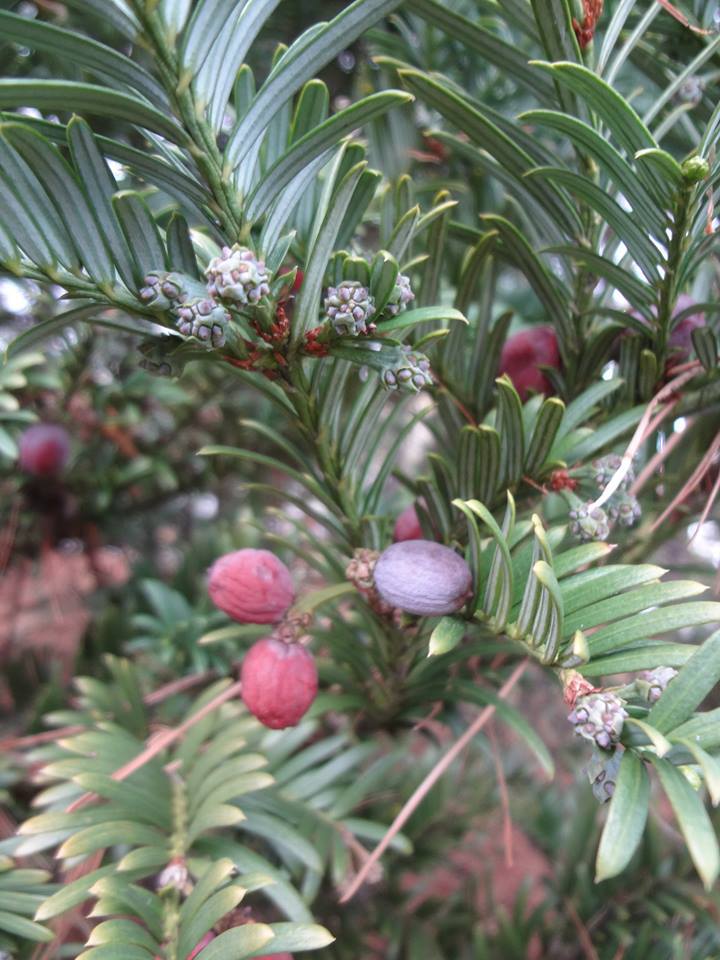Cephalotaxus koreana, as described in 1930 by Takenoshin Nakai (1882-1952), in Botanical Magazine, Tokyo vol. 44 is commonly known as Korean plum-yew; as well as 犬榧 ŠœŸçœŸŠ (Inu-gaya) in the Japanese language and as 개비ìžë‚˜ë¬´ (gaebijanamu) in Korean.
The molecular analysis of Hao et al. ( Interspecific relationships and origins of Taxaceae and Cephalotaxaceae revealed by partitioned Bayesian analyses of chloroplast and nuclear DNA sequences; Plant Systematics and Evolution 276:89-104; ©2008) suggests that the clade C. harringtonii - C. koreana - C. wilsoniana is monophyletic, and that the latter two species could be treated as varieties of C. harringtonii.
Description. Korean plum-yew is an upright, slow-growing evergreen coniferous species of shrub which grows to mature heights of 10 feet (3 m) tall, with dense branching and black-green needles measuring circa 2 inches (5 cm) long and 0.16 inch (4 mm) wide.
Distribution. This species is native to Japan - the islands of Honshu and Hokkaido; as well as North and South Korea; and northeastern China, where it can be found growing at low to middle elevations.
Hardy to USDA Zone 6 - cold hardiness limit between -10° and 0°F (-23.2° and -17.8°C).
